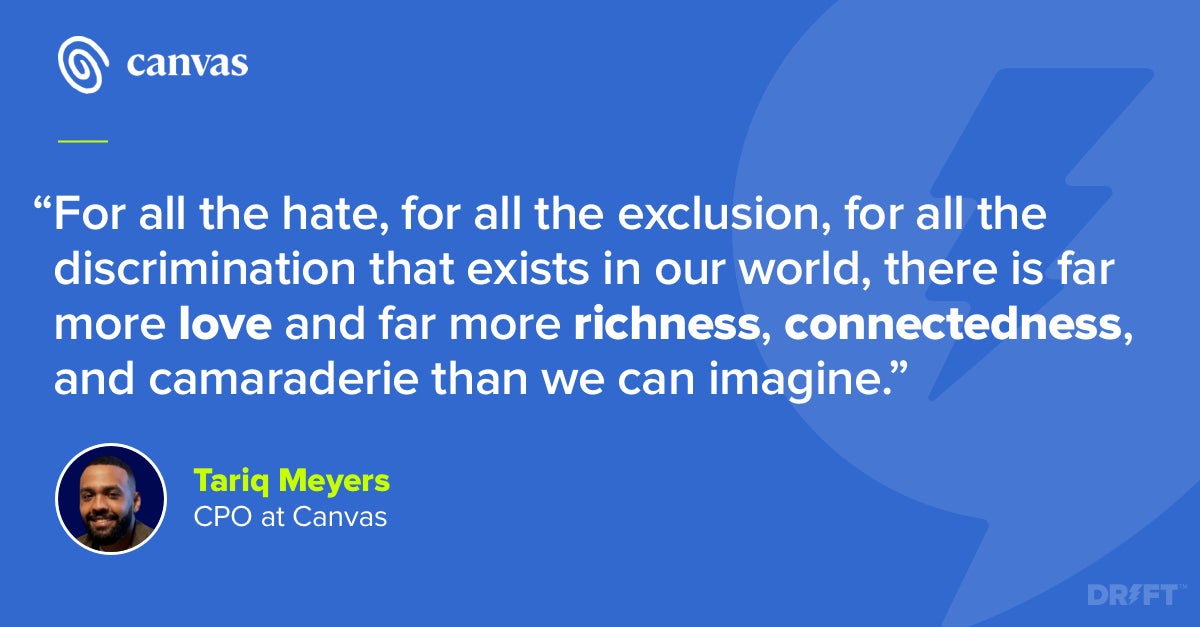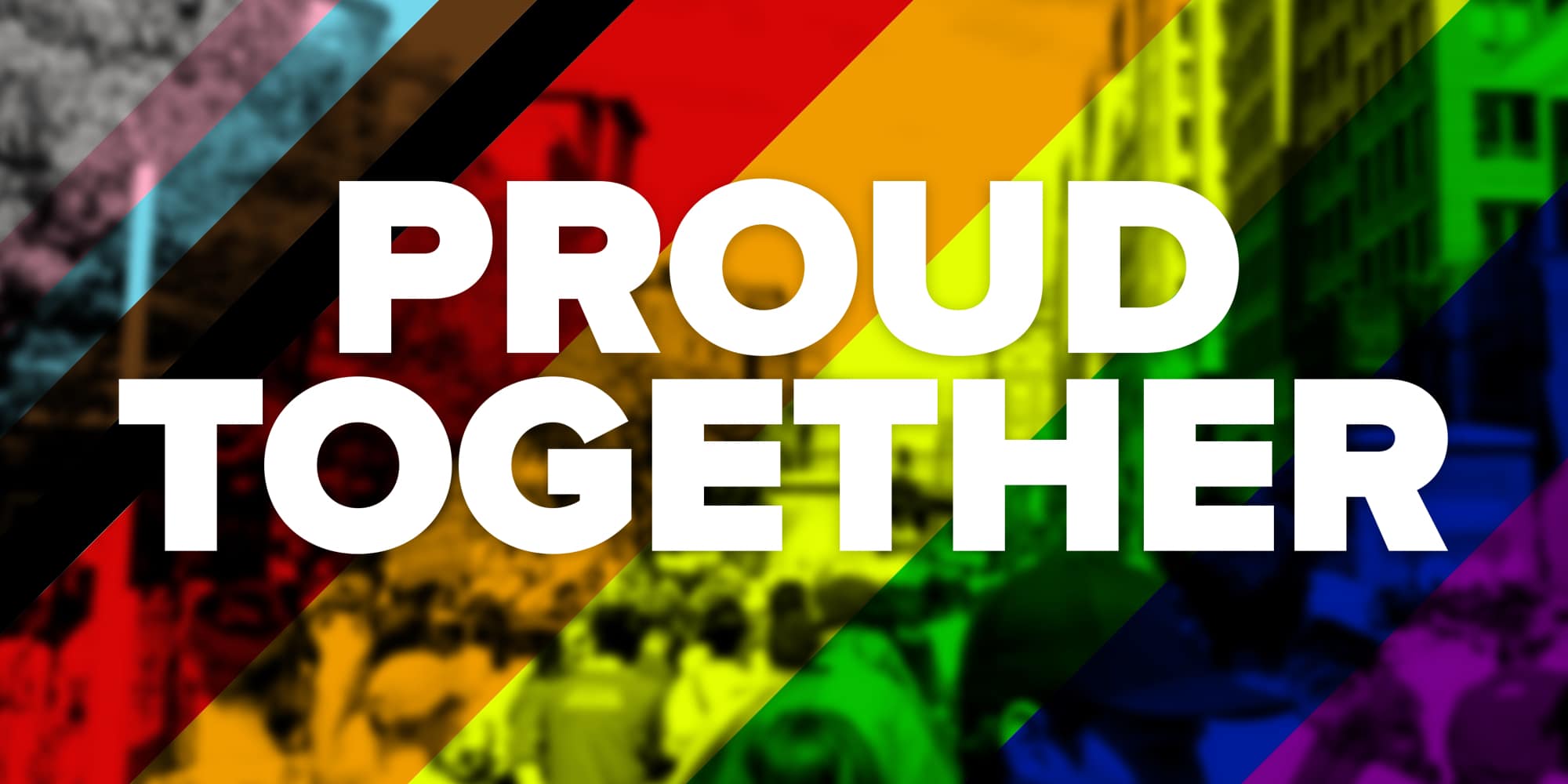Pride Month was born from protest.
The Stonewall Riots are typically seen as the spark; an act of defiance that was commemorated a year later with the first New York City Pride Parade on June 28, 1970.
Stonewall wasn’t the first time the LGBTQ+ community rallied against the prejudices they faced on a daily basis. But as Michael Bronski – an activist, author, and Harvard professor – noted, it was a direct act of resistance. It tapped into an outrage and passion that defined this moment in history (which saw a patchwork of protests for civil rights, gender equality, and against the Vietnam War).
These feelings of outrage, and overlapping issues of inequality, defined our past year as well – from the murder of George Floyd, to the health care disparities made clear during the pandemic, and the rise in anti-Asian hate crimes.
So, in celebrating Pride Month, we wanted to have a frank discussion about the importance of speaking out, and how companies and individuals can help push inclusion efforts forward for the LGBTQ+ community.
Because there’s still work to do. A recent study from the Human Rights Campaign found that 46% of LGBTQ+ workers say they’re closeted at work. And 53% of those workers said they’ve heard derogatory jokes or remarks about lesbian or gay people at least once in the workplace.
In our discussion on How to Include, Celebrate, and Support LGBTQ+ Employees in the Workplace, we were honored to be joined by:
- Udi Ledergor, Chief Marketing Officer at Gong
- Lorena Morales, VP of Marketing at Go Nimbly
- Tariq Meyers, Chief People Officer at Canvas
Companies are taking a clear stance on social issues.
In the past, there’s been a hesitancy among companies to weigh in on social issues, putting on this front of being “politically agnostic.” But that’s changed.
As Udi Ledergor noted:
“Companies are coming out of the closet, pun intended, and taking a stand.”
Paying lip service to diversity and inclusion isn’t enough – people want to see the effort that’s being made to truly create change.
With Pride Month, there’s been a lot of discussion around the intent behind corporate sponsorships, and how businesses show solidarity with Pride-themed logos and merchandise. The question being: is this just performative? How are these businesses also taking action to create more inclusive workplaces?
One company that Lorena Morales praised for its efforts and transparency was Pendo, which publishes real-time graphics on their website of their employee demographics. They’re open about the work that needs to be done, and their commitment to doing it.
As Lorena advised: “You might not always have the opportunity to choose a company or an organization, but if you do, try to make sure that they’re either already working on diversity and inclusion, or that they’re trying to get there.”
Creating a safe work environment, in which people feel recognized rather than isolated, should be a top priority for companies. But striving for diversity of thought should never come at the expense of people’s psychological or even physical safety. Udi acknowledged this caveat, clarifying, “Inclusion does have its limits. I don’t want to attract bigots and homophobes and other folks to Gong – I don’t want them to feel comfortable at Gong.”
Companies should rework culture to fit the margins, not the other way around.
Traditionally, striving for inclusivity has fallen on the shoulders of underrepresented groups. But as Tariq Meyers highlighted, inclusion in the workplace doesn’t mean helping an individual better assimilate into the organization. It’s about how the organization can better support each individual.
One influential moment in Tariq’s career was working on Lyft’s first gender inclusion and affirmation policy with his colleague Samuel Carrington. As Tariq described, “We made it about how the organization can bend towards the margins, instead of the margins bending towards the organization.”

It was this mentality that helped Tariq’s team at Canvas settle on the tagline, the future looks like me, since the company’s “true North Star is giving the power of representation back to the candidate.”
As culture officers and company leaders continue to think about creating an inclusive workplace, they have to consider their own blind spots. Tariq recommends starting with the Human Rights Campaign’s Corporate Equality Index to better understand how your policies are supporting the LGBTQ+ community (and how they can be improved).
Because, in his words, “attending a one-time training isn’t cutting it.”
Navigating self-advocacy and allyship
As companies work to get better with their inclusion efforts, what can members of the LGBTQ+ community do to advocate for their own safety and inclusion?
One agreed-upon answer was: voluntary identification, which came up a few times throughout our discussion. This could be stating your pronouns when introducing yourself or including them in your email signature. As Tariq said, “We need to see more opportunities for self-reported representation, and for candidates to show up as who they are, not parts of who they are, not checkboxes.”
Lorena agreed: “The beauty of self-identification is that it’s voluntary,” it’s an opportunity to have agency around your own identity. Though, there is a vulnerability that comes with this – not to mention the fear of workplace discrimination. But the one thing that we all cannot do is let discomfort keep us from moving forward. As Lorena said, “Why on earth are we avoiding conversations that need to happen?” This is usually the starting point for progress.
Tariq also offered a hopeful reminder, that we’re already seeing huge strides in younger generations who’ve shown much more acceptance around LGBTQ+ communities. As Tariq touched on, “For all the hate, for all the exclusion, for all the discrimination that exists in our world, there is far more love and far more richness, connectedness, and camaraderie than we can imagine.”

Then, there’s the question of: how can allies better support their LGBTQ+ peers? Udi offered two important pieces of advice, the first being: stop assuming. Don’t make assumptions about your colleagues’ identity, the gender of their significant other, and so on. Instead, find a way to make them feel comfortable sharing this information on their own terms.
As he further explained, “Anyone not part of a certain underrepresented community is afraid of over-asking and being obtrusive with their questions…And my guidance to friends and allies is simple: consider the type of questions you would ask a cis-straight man that you know you’re not going to offend in any way, and use the exact same questions when you’re talking to a trans woman, lesbian woman, gay man, or anyone that you’re sitting down with.”
The second piece of advice – which can be difficult to do in the moment – is to stand up when you witness something transphobic or homophobic. Or really, anytime someone refers to an underrepresented group in a disrespectful way.
Lorena broke this down further, “It’s not enough for you to say I’m not discriminating. It has to be speaking on the behalf of the person that is not in the room, or even better, be the person that brings unrepresented people into the room.”

Looking ahead
During our panel, Tariq Meyers quoted DeRay McKesson, a civil rights activist and prominent figure in the Black Lives Matter movement, who said that “protest is simply telling the truth in public.”
We don’t always know the ripple effect that our actions and words will have on people outside of our direct communities. But we do know that staying silent serves no one, and Pride is an excellent reminder of the progress that can be made by speaking out.




